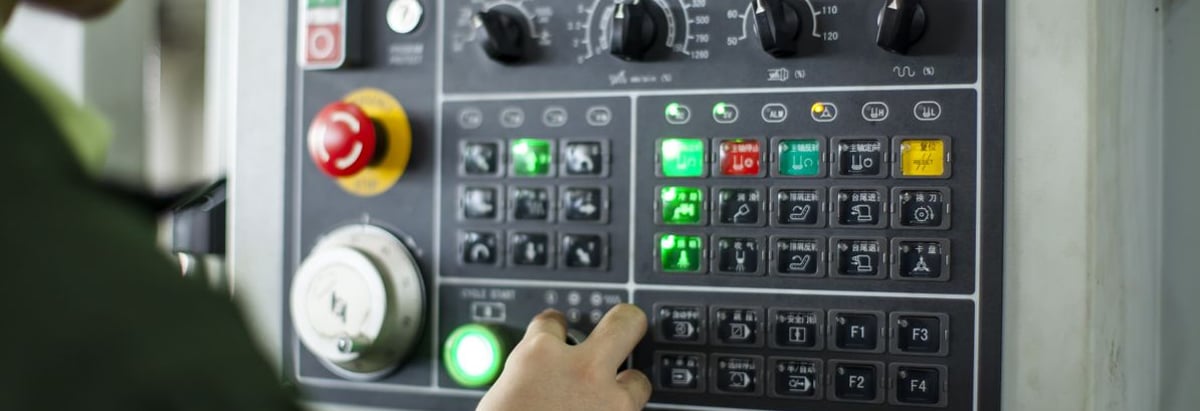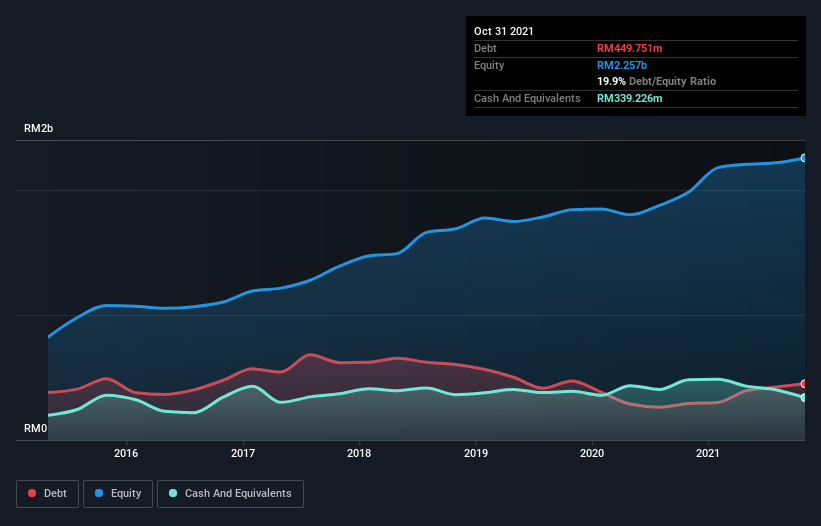These 4 Measures Indicate That V.S. Industry Berhad (KLSE:VS) Is Using Debt Safely

Warren Buffett famously said, 'Volatility is far from synonymous with risk.' It's only natural to consider a company's balance sheet when you examine how risky it is, since debt is often involved when a business collapses. Importantly, V.S. Industry Berhad (KLSE:VS) does carry debt. But the more important question is: how much risk is that debt creating?
What Risk Does Debt Bring?
Generally speaking, debt only becomes a real problem when a company can't easily pay it off, either by raising capital or with its own cash flow. If things get really bad, the lenders can take control of the business. However, a more usual (but still expensive) situation is where a company must dilute shareholders at a cheap share price simply to get debt under control. By replacing dilution, though, debt can be an extremely good tool for businesses that need capital to invest in growth at high rates of return. The first step when considering a company's debt levels is to consider its cash and debt together.
Check out our latest analysis for V.S. Industry Berhad
What Is V.S. Industry Berhad's Net Debt?
You can click the graphic below for the historical numbers, but it shows that as of October 2021 V.S. Industry Berhad had RM449.8m of debt, an increase on RM292.0m, over one year. However, because it has a cash reserve of RM339.2m, its net debt is less, at about RM110.5m.

A Look At V.S. Industry Berhad's Liabilities
We can see from the most recent balance sheet that V.S. Industry Berhad had liabilities of RM1.10b falling due within a year, and liabilities of RM184.2m due beyond that. Offsetting these obligations, it had cash of RM339.2m as well as receivables valued at RM1.15b due within 12 months. So it actually has RM209.4m more liquid assets than total liabilities.
This short term liquidity is a sign that V.S. Industry Berhad could probably pay off its debt with ease, as its balance sheet is far from stretched.
In order to size up a company's debt relative to its earnings, we calculate its net debt divided by its earnings before interest, tax, depreciation, and amortization (EBITDA) and its earnings before interest and tax (EBIT) divided by its interest expense (its interest cover). Thus we consider debt relative to earnings both with and without depreciation and amortization expenses.
V.S. Industry Berhad's net debt is only 0.26 times its EBITDA. And its EBIT covers its interest expense a whopping 49.8 times over. So you could argue it is no more threatened by its debt than an elephant is by a mouse. In addition to that, we're happy to report that V.S. Industry Berhad has boosted its EBIT by 55%, thus reducing the spectre of future debt repayments. The balance sheet is clearly the area to focus on when you are analysing debt. But ultimately the future profitability of the business will decide if V.S. Industry Berhad can strengthen its balance sheet over time. So if you're focused on the future you can check out this free report showing analyst profit forecasts.
Finally, while the tax-man may adore accounting profits, lenders only accept cold hard cash. So the logical step is to look at the proportion of that EBIT that is matched by actual free cash flow. Looking at the most recent three years, V.S. Industry Berhad recorded free cash flow of 32% of its EBIT, which is weaker than we'd expect. That's not great, when it comes to paying down debt.
Our View
V.S. Industry Berhad's interest cover suggests it can handle its debt as easily as Cristiano Ronaldo could score a goal against an under 14's goalkeeper. But, on a more sombre note, we are a little concerned by its conversion of EBIT to free cash flow. Zooming out, V.S. Industry Berhad seems to use debt quite reasonably; and that gets the nod from us. After all, sensible leverage can boost returns on equity. There's no doubt that we learn most about debt from the balance sheet. But ultimately, every company can contain risks that exist outside of the balance sheet. For example, we've discovered 3 warning signs for V.S. Industry Berhad (1 makes us a bit uncomfortable!) that you should be aware of before investing here.
Of course, if you're the type of investor who prefers buying stocks without the burden of debt, then don't hesitate to discover our exclusive list of net cash growth stocks, today.
New: Manage All Your Stock Portfolios in One Place
We've created the ultimate portfolio companion for stock investors, and it's free.
• Connect an unlimited number of Portfolios and see your total in one currency
• Be alerted to new Warning Signs or Risks via email or mobile
• Track the Fair Value of your stocks
Have feedback on this article? Concerned about the content? Get in touch with us directly. Alternatively, email editorial-team (at) simplywallst.com.
This article by Simply Wall St is general in nature. We provide commentary based on historical data and analyst forecasts only using an unbiased methodology and our articles are not intended to be financial advice. It does not constitute a recommendation to buy or sell any stock, and does not take account of your objectives, or your financial situation. We aim to bring you long-term focused analysis driven by fundamental data. Note that our analysis may not factor in the latest price-sensitive company announcements or qualitative material. Simply Wall St has no position in any stocks mentioned.
About KLSE:VS
V.S. Industry Berhad
An investment holding company, engages in the manufacturing, assembling and selling electronic and electrical products, and plastic molded components and parts.
Excellent balance sheet, good value and pays a dividend.
Market Insights
Community Narratives



